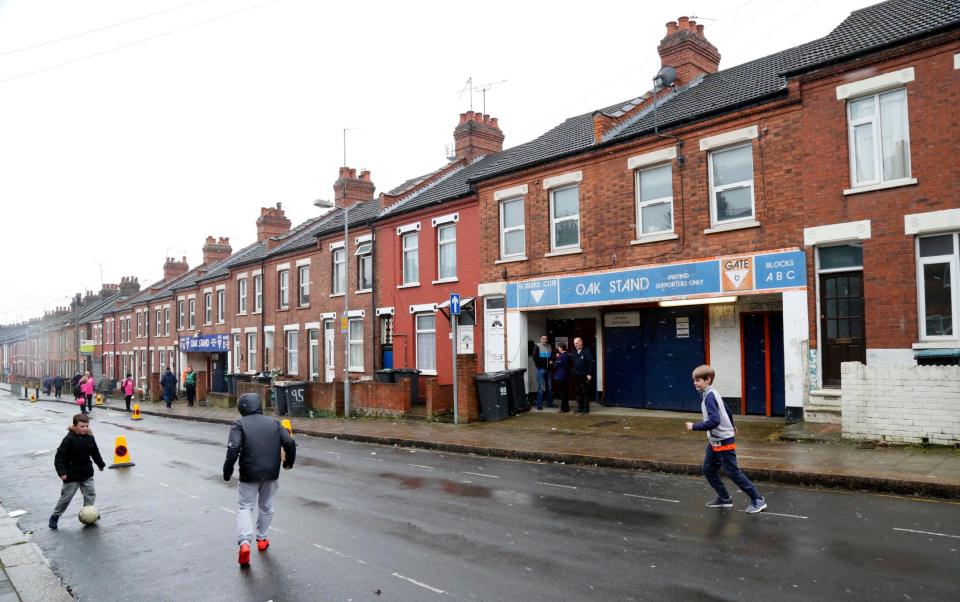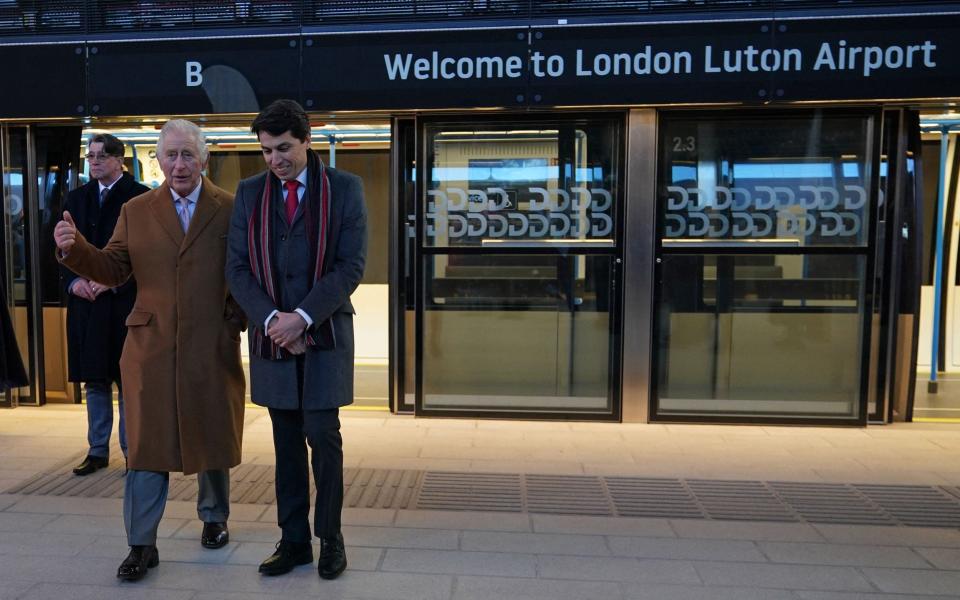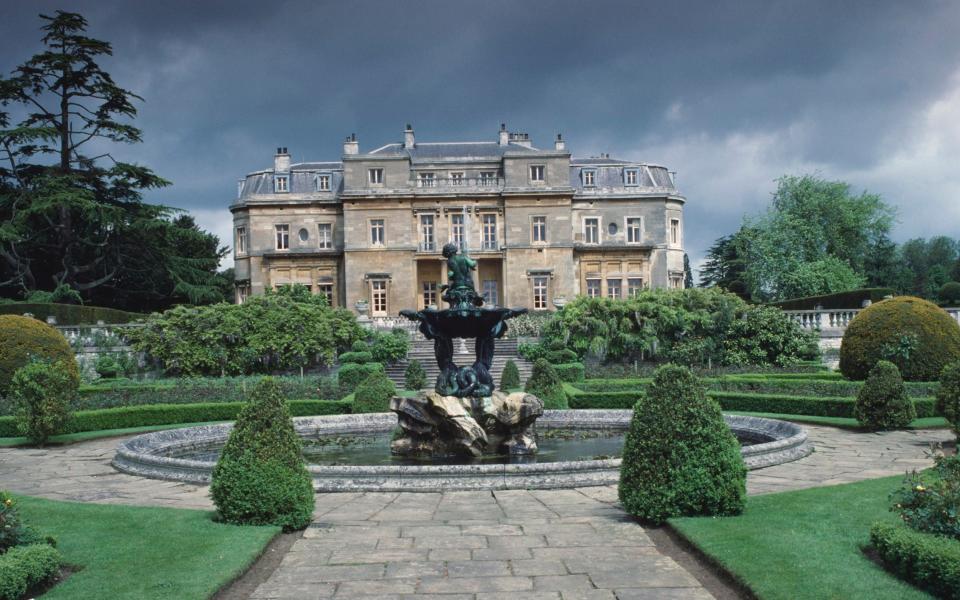How Britain’s ‘crappest’ town is plotting a path to tourism’s premier league

Luton attracts lots of tourists. Millions of them. The only problem for the businesses in Luton is that these visitors tend to flee the town as quickly as possible after touching down at the airport. But after the local football team’s promotion to the Premier League, that could all be about to change.
In one of football’s great rags-to-riches stories, Luton Town were promoted to the Premier League on Saturday for the first time since the league’s inception in 1992, beating Coventry City on penalties. Just nine years ago, the club competed in the non-league fifth tier following years of financial mismanagement and points deductions. No other team in the modern era has ever achieved a climb up the leagues at such speed.
For the fans, this is everything. But there are simmering hopes that the club’s Premier League promotion could affect the town more broadly. Could it be that this moment of sporting success will reverse the fortunes of the deprived town? Or, dare we say it, could Luton become something of a tourist destination in its own right? History shows we shouldn’t rule it out.
The town is certainly starting from the fifth tier when it comes to its reputation. Most people will live a long, happy life without stepping foot in Luton’s town centre. But when you grow up in Harpenden like I did, the town is slightly harder to ignore. Although we do try. Luton is just three miles up the road, but Harpenden’s residents tend to face towards the more genteel St Albans, three miles the other way.

If trying to explain where Harpenden is, to the uninitiated, we would say “near St Albans” and only resort to “near Luton” after trying Hemel Hempstead, Watford, Hitchin, Stevenage, Berkhamsted, Hatfield, Kimpton, Welwyn Garden City, Lower Gustard Wood and the hamlet of Trowley Bottom, population 100.
My family even cashed in on this snobbishness. When we moved from the village of Wheathampstead to Harpenden, we could only afford our new home because it had the “undesirable” address of Luton Road. And as a wet-behind-the-ears teenager, I must admit I understood why. Luton was terrifying. My friends and I had a knife pulled on us during a night out, and getting “started on” was a near certainty on any visit to the Galaxy Cinema Complex. In the end we just stopped going.
And the context, of course, is that Luton is a long-deprived town. According to the Department for Work and Pensions, there are more than 15,000 children in Luton living in poverty, far above the national average. Unemployment is 5.7 per cent compared to a national average of 3.8 per cent.
And in a 2023 poll by ilivehere.co.uk, the Bedfordshire town was ranked the worst place to live in England, finishing above Peterborough and Portsmouth in second and third, respectively. This shows no improvement since Luton received first place in the book Crap Towns: The 50 Worst Places to Live in the UK, way back in 2004.
But change could be on the horizon. The club is in a 75-day race to get its current stadium at Kenilworth Road ‘Premier League ready’, but looking further forward, Luton Town has plans for a new stadium, which will more than double the matchday capacity from 10,000 to 23,000. This could have a knock-on effect far beyond football. Many stadiums are one-stop attractions offering museums, food courts and tours. There’s also the scope for concerts. This week, the Arctic Monkeys sold out a gig at Ashton Gate, second-tier Bristol City’s stadium, which has a capacity of 27,000.

Premier League football brings international tourists, too. According to a 2021 Visit Britain study, more than 1.5 million foreign tourists come to the UK per year to watch a live football match, with Norwegian and Icelandic visitors among the biggest markets. Collectively, these fairweather fans contribute £1.4 billion to the economy per year.
Luton’s cut of the pie may be small compared to giants like Manchester City and Liverpool, but the town will certainly benefit from its proximity to the UK’s fifth largest airport. And that, too, is poised for an expansion, with capacity set to grow from 18 million to 32 million passengers in the coming years, if the latest proposals get the go ahead. In another sign of progress, in March this year the Luton Dart rail link to Luton Airport Parkway was unveiled. It is a significant, if costly (£4.90, one-way) improvement on the bus transfers that came before, and evidence that the council is willing to spend money to improve the area.

“Our town’s rich cultural diversity, combined with its heritage in the car and hat industries, to name but two, make it a thoroughly worthwhile place to visit,” said Councillor Hazel Simmons MBE, of Luton Borough Council. “We have significant ongoing plans for redeveloping the town centre and have already completed a number of significant projects.”
There has been a multi-million pound investment into the renovation of a series of listed factories in the Hat District, including plans for a new venue called The Stage. This, authorities hope, will inject new life into the district, with space for restaurants, bars and cultural facilities. There are also plans to develop new green corridors in the town, including along the River Lea.
“Lutonians are rightly proud of their town and we look forward to welcoming not just Premier League football fans next season, but others interested in discovering what we have to offer and why we are so proud to live here,” Simmons added.
Obviously the greater success a club enjoys in the Premier League, the more tourism and investment will follow. When Leicester City unexpectedly won the league title in 2015/16, the local economy saw a £140 million boost, supporting more than 2,500 jobs. Their European fixtures also brought more than 10,000 international visitors to the town, contributing £8.4 million to the region. That, of course, may be a little further down the line for Luton, but the potential is there: three of the seven teams to qualify for UEFA tournaments this year (Newcastle, Brighton and Hove Albion, Aston Villa) were promoted in the last seven years.

But the recently relegated Leicester also offers a cautionary case study of the ephemeral nature of Premier League success stories.
But for now, at least, there is optimism. UKHospitality Chief Executive, Kate Nicholls said: “As well as attracting the best players in the world, the towns and cities hosting Premier League matches become destinations for football fans from both home and abroad. Pubs, bars, restaurants and hotels all see increased sales on match days, with hotels often reaching peak occupancy from visiting fans.
“The businesses in towns like Luton, who have not been in the top tier for decades, will almost certainly feel a real boost from the additional exposure the Premier League can offer them.”
Granted, it will be a little while until Luton is added to the tourist trail alongside the Lakes and the Cotswolds, but Premier League football is sure to bring more investment and visitor revenue in a town that needs it more than anywhere else. Hats off.


